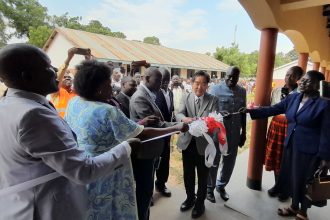Armed Karamojong warriors have resumed attacks on cyclists following a security peace dialogue at Nakiloro trading center in Moroto district.
The attacks have targeted road users and the surrounding communities in Nakabaat, Nakiloro, and Kakingol, areas within the sub-counties of Katikekile and Rupa.
These incidents occurred shortly after joint security forces held meetings with the warring communities of Tepeth and Matheniko at Nakiloro Trading Centre. Despite agreements to resolve conflicts and improve security, violence resumed within a week, resulting in the deaths of four cyclists, including Emmanuel Otim.
The conflict escalated when the Bodaboda association decided to register all cyclists in Moroto town, leading to unrest among the warriors who allegedly used the phones of slain colleagues to threaten remaining cyclists.
Moses Illukol, a cyclist, expressed concerns over the deteriorating security, noting ambushes in areas supposedly secured by forces. Issa Kwalia, spokesperson for the Moroto Bodaboda Association, defended registration as necessary for weeding out undesirable elements, urging cyclists to halt operations until safety improves.
Joseph Otita, LCIII chairperson of Rupa Sub County, warned of escalating insecurity spreading across the district and beyond if not swiftly addressed. He criticized security forces for underestimating threats, fearing retribution from re-armed warriors protecting their assets.
Justin Tuko, Moroto District Deputy Resident District Commissioner, highlighted coordinated attacks by Tepeth and Matheniko warriors, who shifted tactics when faced with increased security presence. He reassured ongoing efforts to apprehend perpetrators and disarm communities in Katikekile and Rupa.
Michael Longole, Mt Moroto Regional Police Spokesperson, traced the crisis to aggravated robberies and targeted killings of Bodaboda riders. He outlined measures like patrols to counter threats, urging public cooperation in providing information for swift arrests.
Longole cautioned against tampering with crime scenes, hindering investigations and the use of canine units to track perpetrators.




















